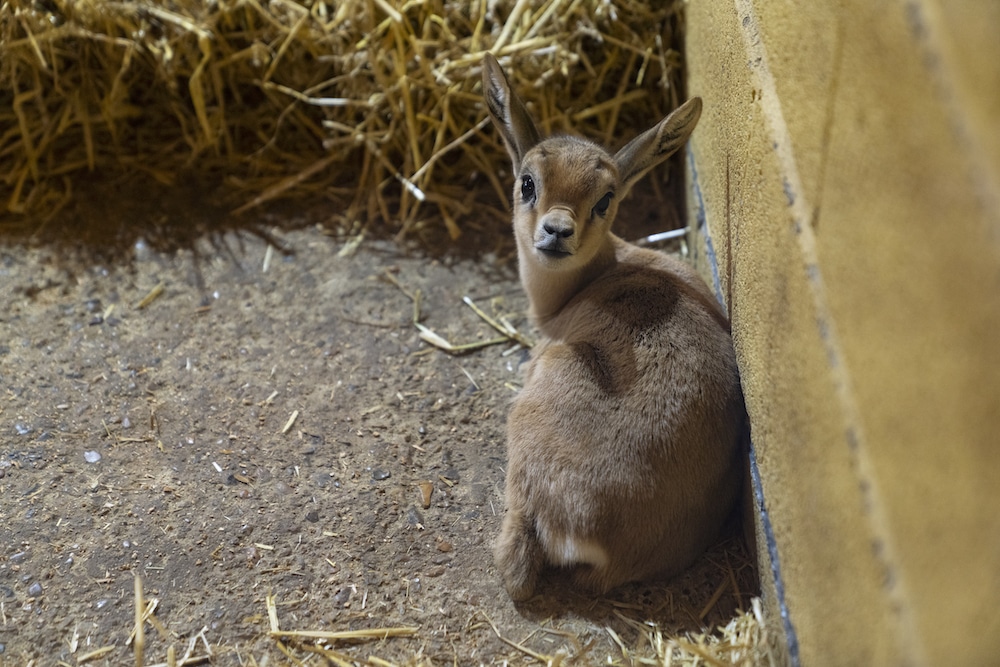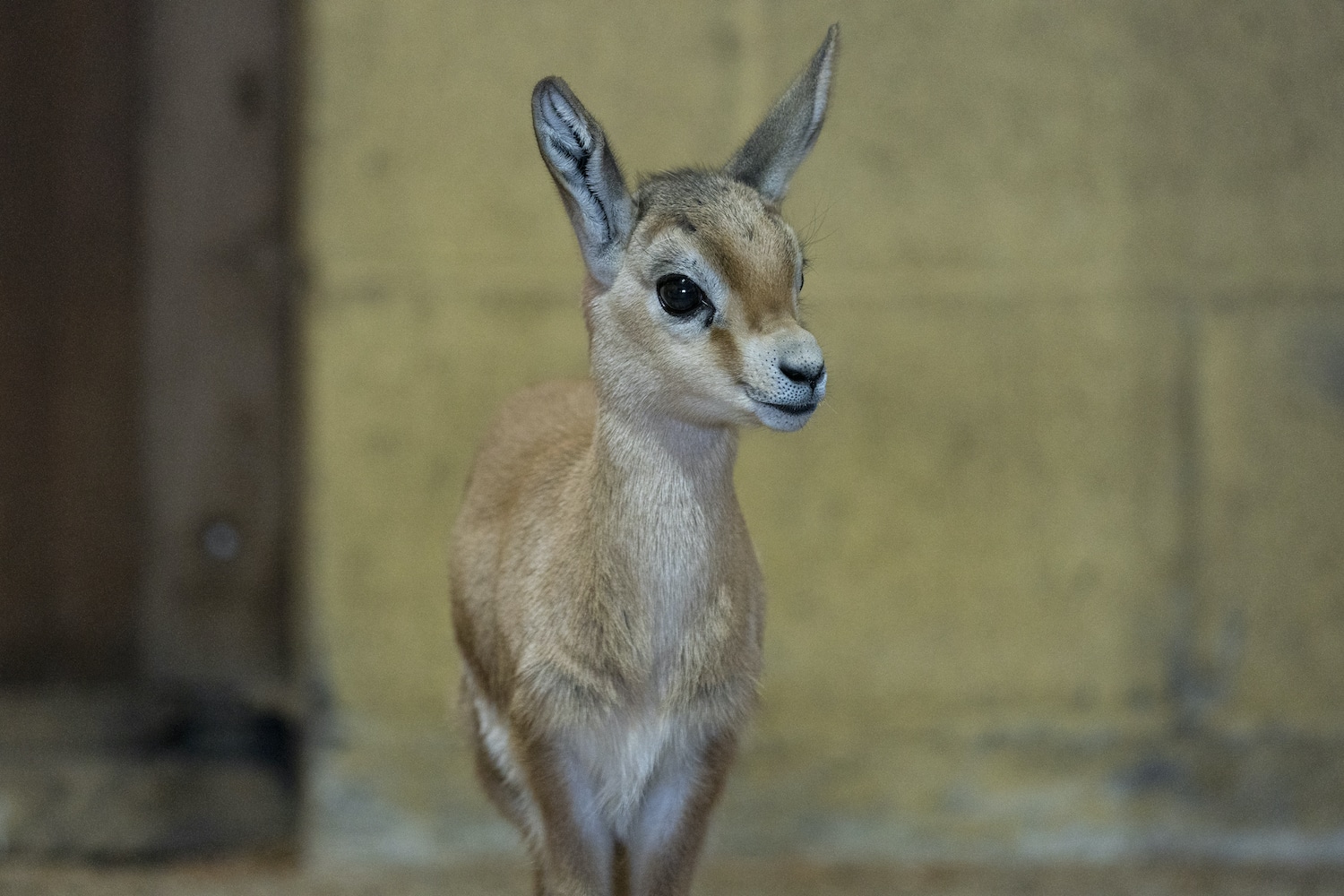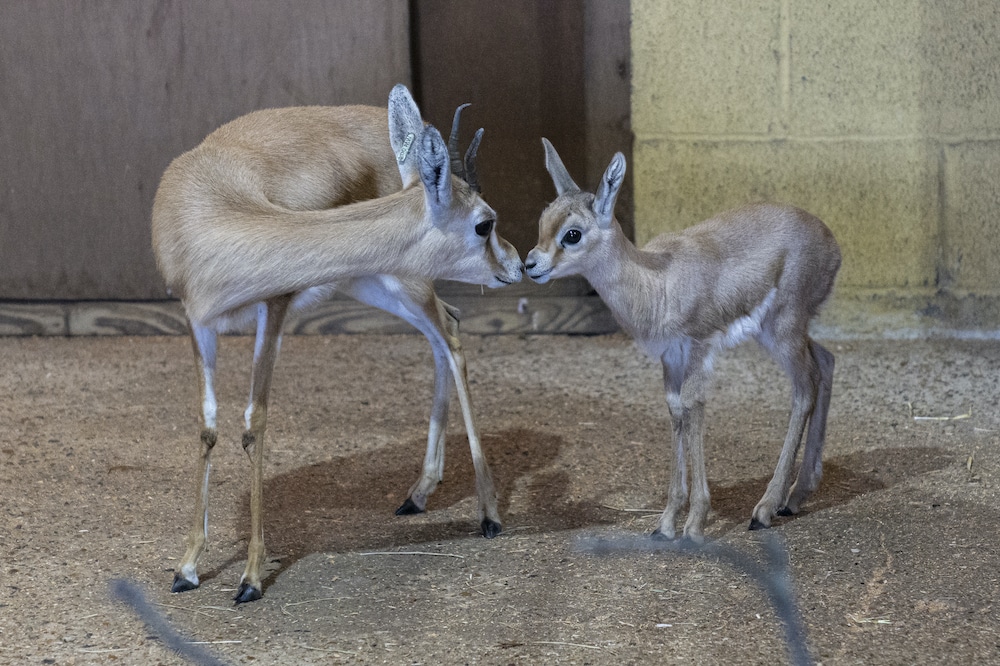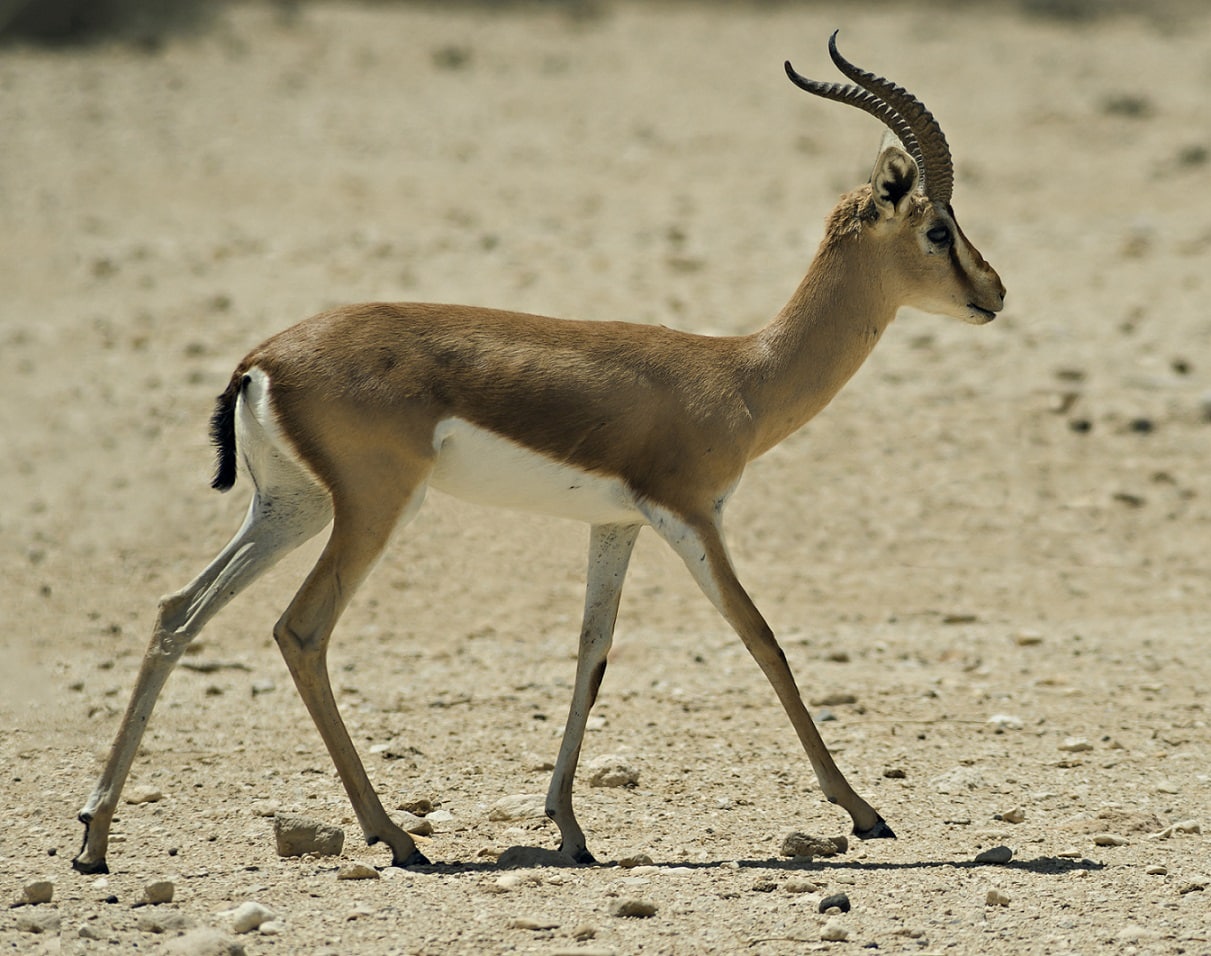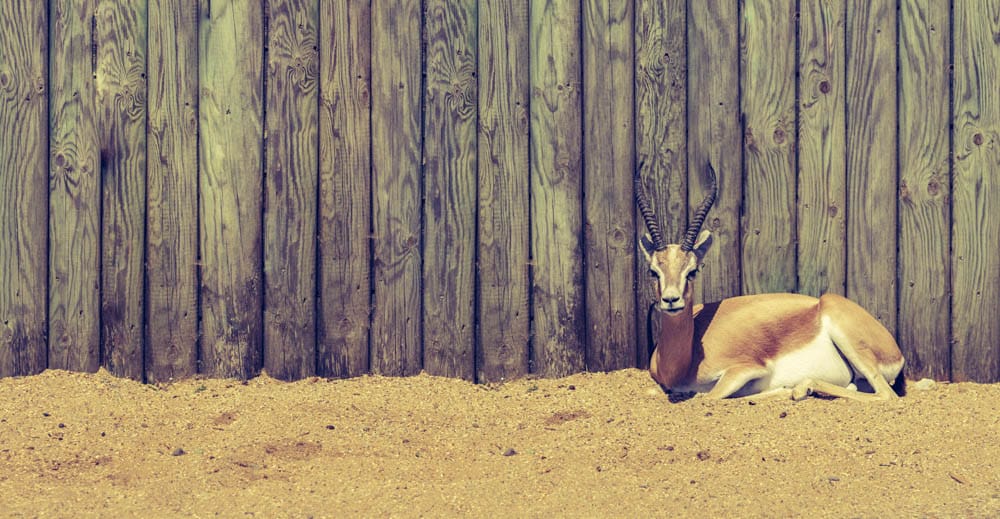Dorcas gazelle
Common Name: Dorcas gazelle
Scientific Name: Gazella dorcas
Dorcas gazelles are so well adapted to desert habitats that they never need to drink! They can get all the moisture they need from their diet.
Although these gazelles can cope with high temperatures, if it is very hot they will be active mainly in the cooler parts of the day, at dawn, dusk and at night.
Dorcas gazelles sometimes stand on their back legs to reach browse on trees, and after rain they have been seen digging bulbs out of the ground.
Fast Facts
-
Status
Vulnerable
-
Size
Head-body: 90-110 cm, shoulder height: 55-65 cm
-
Weight
15-20 kg
-
Gestation
6 months
-
Young
1
-
Life span
Up to 12 years
In the wild
Dorcas gazelles vary what they eat according to the weather conditions. When it is very dry they mainly eat browse, especially the leaves, flowers and pods of acacia trees, because they contain lots of moisture. During the wet season they mostly eat herbaceous plants including grasses.
This species is found across the Saharan region of North Africa, from Morocco in the west to Egypt in the east. Dorcas gazelles live in a variety of arid and semi-arid habitats including savannah, semi-desert, and true desert. They prefer rocky plains with small amounts of vegetation and avoid habitats with large areas of dunes.
Newborn Dorcas gazelles are born with fur and open eyes and will try to stand within an hour of birth. During the first two weeks of its life, the fawn lies hidden in a scrape on the ground or underneath bushes while the mother grazes nearby. Soon after this the infant will start to follow its mother around and eat solid food. Fawns are fully weaned by about three months of age, and at this time the fawn and its mother rejoin the herd.
Dorcas gazelles used to have a number of predators such as cheetah, but these have mostly disappeared from the areas where the Dorcas live, and the only predator adults now face is the golden jackal. Smaller predators such as red foxes, Ruppell’s foxes and large eagles will take fawns, and in areas where people live, domestic dogs are known to predate upon these gazelles.
This species faces a number of threats including hunting, drought, habitat loss and degradation due to an increase in agriculture and overgrazing by livestock. Dorcas gazelles are found in many protected areas and are legally protected in several of the countries they are found in. They are also listed in CITES Appendix III for Algeria and Tunisia, which means they are protected in these countries and trade in the species from these countries is restricted.
